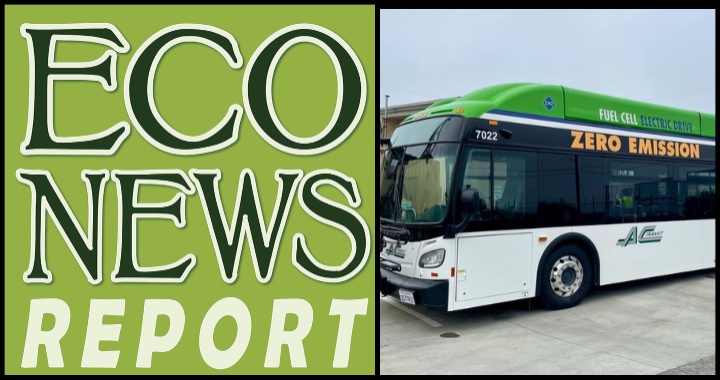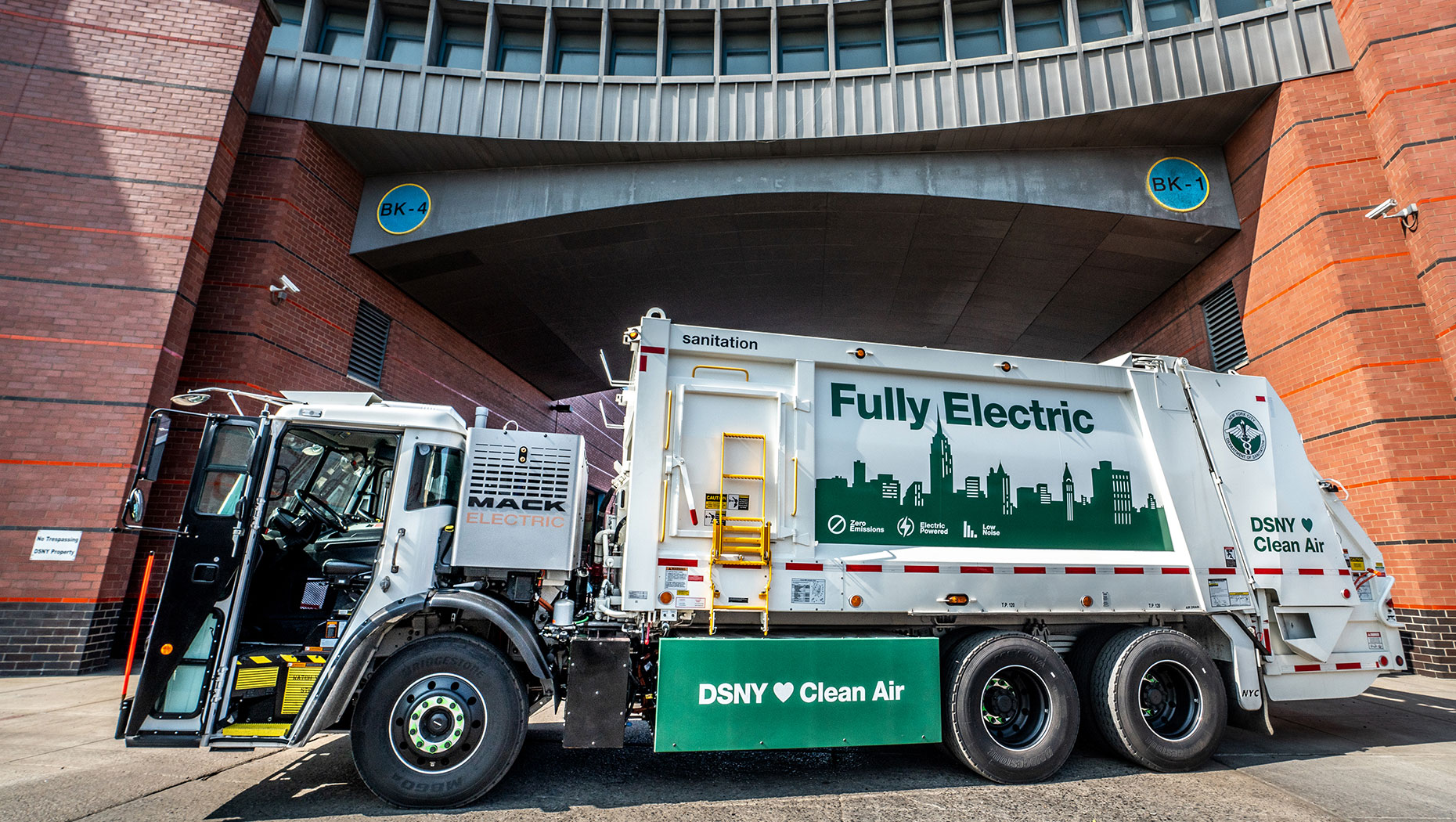Report on Community Workshop for Grid-Scale Battery Energy Storage
Introduction: Advancing Sustainable Energy Infrastructure
A public workshop has been scheduled to address the critical role of battery energy storage systems in achieving a sustainable energy future. This initiative, led by the Redwood Coast Energy Authority (RCEA) in partnership with the Schatz Energy Research Center, aims to foster community understanding and dialogue. The workshop directly supports the implementation of the United Nations Sustainable Development Goals (SDGs), particularly those related to energy, infrastructure, and climate action.
Background and Strategic Context
The Imperative for Energy Storage in Achieving SDG 7
The global transition to 100% renewable energy, a core target of SDG 7 (Affordable and Clean Energy), is dependent on solutions for managing intermittent power sources such as solar and wind. Large-scale battery storage represents a key technological innovation for ensuring a stable and reliable supply of clean energy, thereby facilitating a move away from fossil fuels and advancing SDG 13 (Climate Action).
Public Engagement and Sustainable Community Planning
Recent events, including a fire at the Moss Landing battery facility and local skepticism regarding a proposed project in Blue Lake, have highlighted the need for transparent communication and community involvement. This workshop serves as a proactive measure to address public concerns and ensure that energy infrastructure development is inclusive and participatory, aligning with the principles of SDG 11 (Sustainable Cities and Communities).
Workshop Details and Objectives
Organizing Bodies and Partnerships for the Goals (SDG 17)
The event is a collaborative effort between the Redwood Coast Energy Authority and the Schatz Energy Research Center, exemplifying the multi-stakeholder partnerships essential for achieving the SDGs as outlined in SDG 17.
Event Information
- Date: Wednesday, July 23
- Time: 5:30 p.m. to 7:00 p.m.
- Location: D Street Neighborhood Center, 1301 D Street, Arcata
- Cost: Free to the public
Core Objectives Aligned with SDGs
The workshop is structured to achieve the following key objectives:
- To educate stakeholders on the operational mechanics of utility-scale battery storage, contributing to knowledge-sharing on sustainable infrastructure as per SDG 9 (Industry, Innovation, and Infrastructure).
- To clarify the role of energy storage in supporting California’s grid resilience and its transition to renewable energy sources, directly addressing targets within SDG 7 and SDG 13.
- To facilitate a comprehensive discussion on project variables, including safety protocols, project scale, and community benefits, ensuring that development is safe, resilient, and sustainable in line with SDG 11.
Conclusion: Fostering a Just and Sustainable Energy Transition
This workshop represents a critical step in aligning local energy strategy with global sustainability frameworks. By focusing on technology, safety, and community benefits, the initiative aims to build the necessary support and understanding to advance the development of resilient, clean energy infrastructure. The event underscores a commitment to achieving a sustainable future through informed public-private collaboration, directly contributing to the progress of multiple Sustainable Development Goals.
SDGs Addressed in the Article
-
SDG 7: Affordable and Clean Energy
- The article’s central theme is the transition to “100% renewable energy” from sources like “solar or wind.” It directly discusses the infrastructure, specifically “large-scale industrial battery storage,” needed to make this clean energy reliable and accessible, thus aligning with the goal of ensuring affordable, reliable, sustainable, and modern energy for all.
-
SDG 9: Industry, Innovation, and Infrastructure
- The development and implementation of “large-scale utility battery storage” represents an investment in sustainable and resilient infrastructure. The article highlights this as a critical component for modernizing the energy grid to support renewables, which is a key aspect of building resilient infrastructure and promoting sustainable industrialization.
-
SDG 11: Sustainable Cities and Communities
- The article discusses energy projects and public concerns at a local level, mentioning “Monterey County,” “Blue Lake,” and “Arcata.” The public workshop aims to address community skepticism and educate residents, which relates to making cities and human settlements inclusive, safe, resilient, and sustainable. The safety concerns stemming from the “Moss Landing battery facility” fire are also directly tied to the safety of communities.
-
SDG 13: Climate Action
- The entire motivation for the actions described in the article is to combat climate change. The effort to “transition our energy away from fossil fuels” is a direct climate action measure aimed at reducing greenhouse gas emissions.
-
SDG 17: Partnerships for the Goals
- The article explicitly mentions a partnership between the “Redwood Coast Energy Authority” and the “Schatz Energy Research Center” to host a “free public workshop.” This collaboration is a clear example of a partnership between different stakeholders to achieve common sustainability goals through public education and engagement.
Specific Targets Identified
-
Target 7.2: Increase substantially the share of renewable energy in the global energy mix.
- The article’s stated goal is to “reach 100% renewable energy” and support “intermittent sources — things like solar or wind.” This directly aligns with the target of increasing the proportion of renewable energy.
-
Target 9.4: Upgrade infrastructure and retrofit industries to make them sustainable.
- The discussion focuses on implementing “large-scale industrial battery storage” to support a renewable energy grid. This is a direct example of upgrading energy infrastructure to make it sustainable and capable of handling modern, clean energy sources.
-
Target 13.2: Integrate climate change measures into national policies, strategies and planning.
- The work of the “Redwood Coast Energy Authority” to “transition our energy away from fossil fuels” represents the integration of climate change measures into regional energy strategy and planning.
-
Target 17.17: Encourage and promote effective public, public-private and civil society partnerships.
- The “collaboration with the Schatz Energy Research Center” by the Redwood Coast Energy Authority to host a public workshop is a direct example of a partnership aimed at promoting sustainable development through education and community outreach.
Indicators Mentioned or Implied
-
Share of renewable energy in the energy mix.
- The goal of “100% renewable energy” is a clear, measurable indicator. Progress can be tracked by the percentage of energy generated from renewable sources like solar and wind in the region.
-
Investment in and development of sustainable infrastructure.
- The article mentions a “recent battery proposal in Blue Lake” and the general need for “large-scale industrial battery storage.” The number of such projects proposed, approved, or constructed can serve as an indicator of investment in the necessary infrastructure.
-
Number of educational and community engagement events.
- The article announces a “free public workshop on grid-supporting battery energy storage.” The number of such workshops held and the level of public attendance can be used as an indicator to measure progress in community engagement and education on sustainable energy.
Summary of SDGs, Targets, and Indicators
| SDGs | Targets | Indicators |
|---|---|---|
| SDG 7: Affordable and Clean Energy | 7.2: Increase substantially the share of renewable energy in the global energy mix. | The share of energy from “solar or wind” sources, with a goal of “100% renewable energy.” |
| SDG 9: Industry, Innovation, and Infrastructure | 9.4: Upgrade infrastructure and retrofit industries to make them sustainable. | The number and capacity of “large-scale industrial battery storage” facilities proposed and built. |
| SDG 11: Sustainable Cities and Communities | 11.b: Increase the number of cities implementing integrated policies for resilience and sustainability. | Implementation of regional energy plans (e.g., by Redwood Coast Energy Authority) and addressing community safety concerns (“Moss Landing…fire”). |
| SDG 13: Climate Action | 13.2: Integrate climate change measures into policies, strategies and planning. | The implementation of a regional strategy to “transition our energy away from fossil fuels.” |
| SDG 17: Partnerships for the Goals | 17.17: Encourage and promote effective public, public-private and civil society partnerships. | The number of collaborative events, such as the “free public workshop” hosted by the “Redwood Coast Energy Authority, in collaboration with the Schatz Energy Research Center.” |
Source: lostcoastoutpost.com







